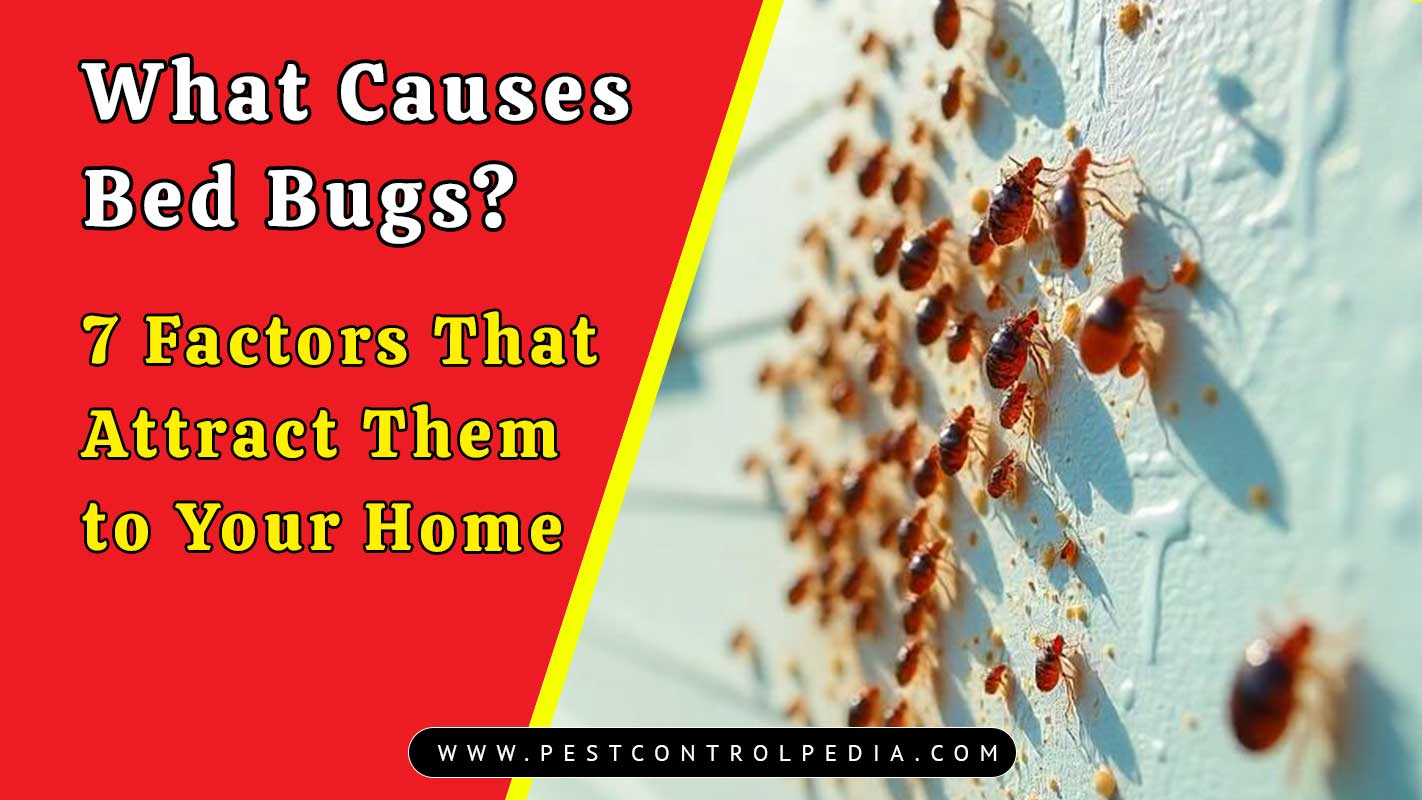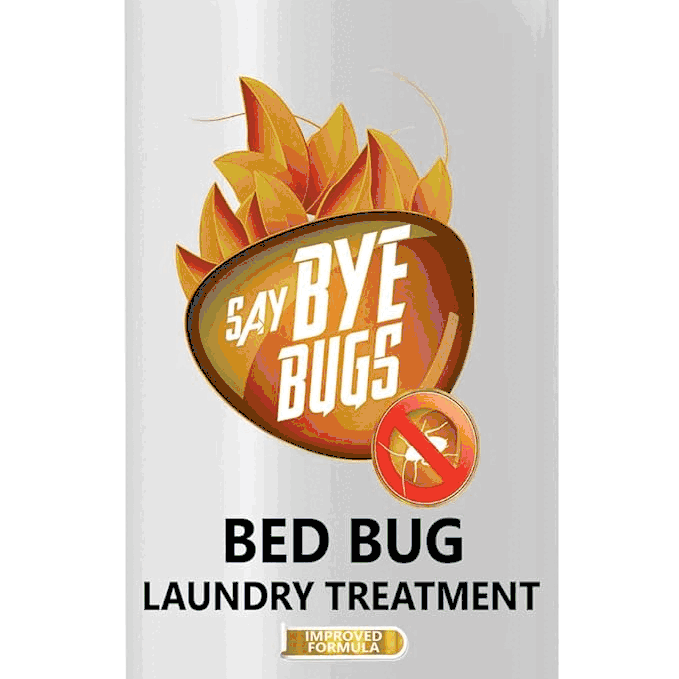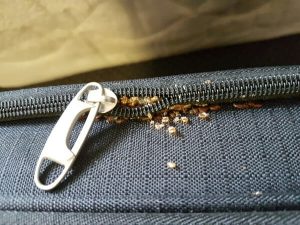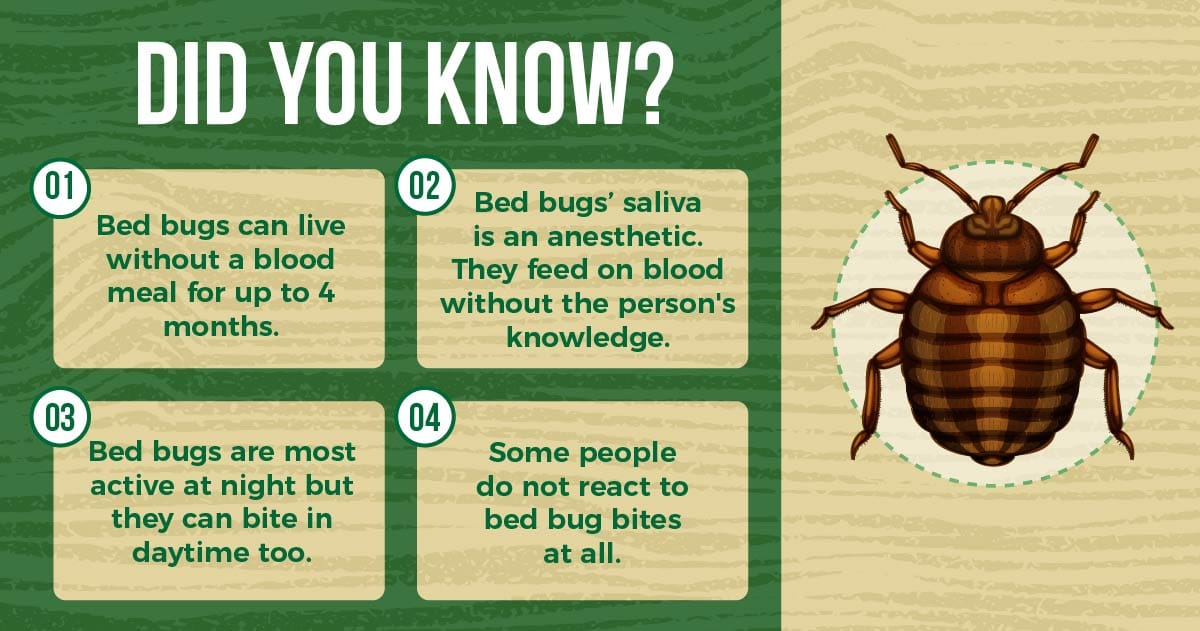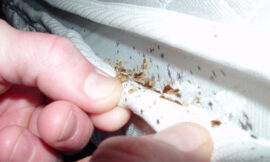Understanding the causes of bed bug infestations is crucial for preventing and controlling these pests effectively. Bed bugs are a growing problem worldwide, with infestations increasing significantly since the 1990s due to factors such as increased international travel, the use of second-hand furniture, and the development of insecticide resistance.
Early detection is key to preventing bed bug infestations from becoming severe and difficult to eradicate. Bed bugs can spread quickly, moving between rooms and even buildings, and can survive for long periods without feeding.
Prevention is also essential in avoiding bed bug problems. Taking precautions when traveling, such as inspecting hotel rooms and keeping luggage off the bed, can help prevent bringing bed bugs home.
Let us understand the causes of bed bug infestations and taking proactive steps to prevent and detect them early, so that individuals and communities can better manage this growing problem and minimize the impact of these pests on health and quality of life.
1. Bed Bugs: Unwanted Travel Companions and Furniture Invaders
Travel and Infestation Sources
Bed bugs are notorious for their ability to hitchhike on luggage and personal belongings, making them a common problem for travelers. These tiny pests can easily latch onto your suitcase, backpack, or even your clothing during your adventures, and before you know it, they've made their way into your home.
It's crucial to be vigilant when traveling and to inspect your luggage thoroughly upon returning home. Look for any signs of bed bugs, such as small brown spots, shed skins, or even the bugs themselves. If you suspect an infestation, it's best to isolate your luggage and clothing and seek professional help to prevent the problem from spreading.
Another potential source of bed bug infestations is second-hand furniture. While it may be tempting to score a great deal on a used couch or mattress, it's important to exercise caution. Carefully inspect any second-hand items for signs of bed bugs before bringing them into your home. If you're unsure, it's better to err on the side of caution and avoid the purchase altogether.
Also Read: What Attracts Bed Bugs to My Home?
2. Environmental Factors
Role of Temperature in Bed Bug Proliferation
Temperature plays a crucial role in the life cycle and reproduction of bed bugs. These pesky insects thrive in warm environments and can quickly multiply when temperatures are favorable. Bed bugs are ectothermic, meaning their body temperature depends on the surrounding environment. As the temperature rises, their metabolism and activity levels increase, leading to faster development and more frequent breeding.
Ideal Temperature Range for Bed Bug Survival
Bed bugs are resilient creatures and can survive a wide range of temperatures, but they prefer a specific range for optimal growth and reproduction. The ideal temperature for bed bugs is between 70°F and 90°F (21°C and 32°C). Within this range, bed bugs can complete their life cycle more efficiently, with shorter egg-to-adult development times and higher survival rates.
Importance of Maintaining Consistent Temperatures in Living Spaces
To prevent and control bed bug infestations, it is crucial to maintain consistent temperatures in living spaces. Fluctuating temperatures can disrupt the bed bugs' life cycle and make it harder for them to thrive. Keeping indoor temperatures within the preferred range and minimizing sudden temperature changes can help reduce the risk of bed bug infestations and make it easier to manage existing ones.
In addition to temperature, other environmental factors such as humidity and air circulation can also impact bed bug populations. Understanding the role of these factors can help in developing effective strategies for bed bug prevention and management.
3. Bed Bug Hiding Spots: Where They Love to Hide
Cracks, Crevices, and Seams
Bed bugs are masters of hiding in plain sight. They absolutely love to tuck themselves away in small, tight spaces like cracks, crevices, and seams. These cozy little nooks and crannies provide the perfect shelter for bed bugs to hide, rest, and lay their eggs. Bed bugs can squeeze into the tiniest of openings, making them a real challenge to spot and eliminate.
Regularly Inspect and Seal Potential Hiding Spots
To keep bed bugs at bay, it's crucial to regularly inspect your home for any potential hiding spots and seal them up tight. Check along the edges of your mattress, inside box springs, behind baseboards, in electrical outlets, and in any other small gaps or crevices. Use caulk, sealant, or other materials to fill in these potential entry points and deny bed bugs a place to hide.
Clutter Provides More Hiding Places
Bed bugs love clutter - the more nooks and crannies, the better! Piles of clothes, stacks of books, and other household clutter can give bed bugs even more places to hide and thrive. Keeping your living spaces clean, tidy, and free of excess stuff makes it much harder for bed bugs to find a cozy spot to call home. Decluttering can go a long way in the fight against these pesky pests.
4. Lack of Awareness and Knowledge
One of the key reasons why bed bugs continue to be a persistent problem is the lack of awareness and knowledge surrounding these pesky insects. Many people are unaware of the signs and symptoms of bed bug infestations, making it difficult to identify and address the problem early on.
Importance of Educating Oneself
It is crucial for individuals to educate themselves about bed bugs, their behavior, and the steps they can take to prevent and control infestations. By learning about bed bugs, people can be better equipped to recognize the signs of an infestation, such as blood spots on bedding, shed skins, and the presence of the insects themselves.
Common Myths and Misconceptions
Unfortunately, there are many myths and misconceptions surrounding bed bugs that can hinder effective prevention and control efforts. Some common myths include:
- Bed bugs only infest dirty homes or apartments.
- Bed bugs can be seen with the naked eye.
- Bed bugs only bite at night.
- Bed bugs can be easily eliminated with over-the-counter pesticides.
Dispelling Myths and Promoting Understanding
By providing accurate information and dispelling these myths, we can help promote a better understanding of bed bugs and their behavior. This knowledge can empower individuals to take proactive steps to prevent infestations and seek professional help when needed.
Educating the public about bed bugs is a crucial step in combating this persistent problem. By raising awareness and providing accurate information, we can help reduce the stigma associated with bed bugs and encourage people to take action against these pests.
5. Poor Sanitation and Hygiene
Bed Bugs Thrive in Any Environment
Bed bugs are sneaky little critters that can survive in both clean and cluttered environments. This means that even if you keep your home spotless, bed bugs can still find a way to infest your space. They are masters of hiding in small crevices and cracks, making it easy for them to go unnoticed until it's too late.
Regular Cleaning and Vacuuming
One of the best ways to prevent bed bugs from taking over your home is to maintain good sanitation and hygiene practices. Regular cleaning and vacuuming can help eliminate any bed bugs that may have already made their way into your space. Make sure to clean all surfaces, including mattresses, box springs, and bed frames, to get rid of any potential hiding spots.
Avoid Hoarding Items
Another important step in preventing bed bugs is to avoid hoarding items that can provide hiding spots for them. This includes old furniture, clutter, and any other items that might be hiding bed bugs. Keep your space organized and clutter-free to make it harder for bed bugs to thrive.
Why Sanitation Matters
Sanitation and hygiene are crucial in the fight against bed bugs because they can spread quickly and easily from one place to another. By keeping your home clean and free of clutter, you can reduce the risk of an infestation and make it easier to detect and eliminate any bed bugs that do manage to find their way in.
So, keep your home clean, tidy, and free of clutter to make it a less welcoming place for bed bugs!
- Bed bugs can thrive in both clean and cluttered environments.
- Regular cleaning and vacuuming are important to eliminate bed bugs.
- Avoid hoarding items that can provide hiding spots for bed bugs.
6. Proximity to Infested Areas
How Bed Bugs Spread?
Bed bugs are notorious for their ability to spread quickly from one infested area to another. They can travel on clothing, luggage, furniture, and even people. When you visit an infested area, there is a high chance that you will bring bed bugs back with you. This is because bed bugs are small and can hide in tiny crevices and folds of fabric.
Risk of Moving Infested Items
When you move infested furniture or belongings, you are essentially transporting bed bugs to your new location. This can lead to a rapid infestation in your home. Bed bugs can hide in mattresses, box springs, headboards, and even in the cracks and crevices of furniture. If you move these items without proper treatment, you risk spreading the infestation.
Precautions to Take
- Don't Bring Infested Items Home: Avoid bringing items from infested areas into your home. This includes furniture, clothing, and luggage.
- Inspect Before Moving: Before moving any items, inspect them thoroughly for signs of bed bugs. Look for small, brownish-red insects or tiny black spots.
- Use Protective Measures: When moving, use protective covers or bags to wrap items. This will prevent bed bugs from escaping and spreading.
- Seek Professional Help: If you suspect that your items are infested, consider hiring a professional pest control service to treat and remove the bed bugs.
7. Lack of Proactive Prevention Measures
Importance of Regular Inspections and Early Detection
When it comes to dealing with bed bugs, being proactive is key. Regular inspections of your home, especially in areas where bed bugs are known to hide, can help you catch an infestation early on. This is crucial because the sooner you identify the problem, the easier it will be to get it under control. Bed bugs can multiply quickly, so the earlier you spot them, the better your chances of preventing a full-blown invasion.
Effectiveness of Preventive Measures
Preventive measures, such as encasements for your mattress and box spring, as well as the use of mattress covers, can be highly effective in deterring bed bugs. These barriers make it harder for the bugs to get into your bedding and establish a foothold in your home. Additionally, they can help contain an existing infestation, making it easier to target and eliminate the pests.
Seeking Professional Help for Comprehensive Eradication and Prevention
While there are some DIY methods you can try, when it comes to dealing with bed bugs, it's often best to seek the help of a professional pest control expert. They have the knowledge, tools, and experience to thoroughly inspect your home, identify the extent of the infestation, and develop a comprehensive plan to eradicate the bed bugs. They can also provide guidance on long-term prevention strategies to help ensure the problem doesn't come back.
Remember, being proactive and taking preventive measures can go a long way in keeping bed bugs at bay. By staying vigilant, acting quickly, and enlisting professional help when needed, you can protect your home and your family from the nuisance and discomfort of bed bugs.
Conclusion
In conclusion, understanding the key factors that attract bed bugs is crucial for effective prevention and management. Bed bugs are expert hitchhikers, and environmental conditions, poor sanitation, and lack of awareness can all contribute to infestations.
Proactive measures, such as regular inspections, sealing potential hiding spots, and seeking professional help when necessary, are essential for maintaining a bed bug-free home. For more detailed information and resources, visit the EPA and NPIC websites.
- what causes bed bugs
- bed bug causes
- what causes bed bugs in home
- what causes bed bugs in bed
- what attracts bed bugs
- what causes bed bugs where do they come from
- causes of bed bugs
- what cause bed bugs
- what are bed bugs attracted to
- what brings bedbugs
- bedbugs causes
- what causes bed bugs at home
- cause of bed bugs
- why bed bugs come out ?
- why do bed bugs come
- what causes bed bugs?
- how do bed bugs get in your house
- what attracts bed bugs into your home
- causes of bed bugs infestation
- how are bed bugs caused
- bed bugs reason for infestation
- what causes bed bugs to start
- why do i have bed bugs
- what causes bed bug infestation
- what causes bed bugs in the first place
- what causes bed bugs to die
- what brings bed bugs in the house
- bed bugs
- what are the typical sources of bed bugs
- what causes bed bugs to appear
- what can cause bed bugs
- what causes bugs
- what is bed bugs caused by
- why do bed bugs exist
- why do we get bed bugs
- if your house has too many peoople does that lead to bed bugs
- why do u get bedbugs
- what is the main cause of bed bugs
- what kind of paint causes bed bugs
- what causes bed bugs infestation
- why do you get bed bugs
- what courses bedbugs
- reason for bed bugs
- how does bed bugs get into your home
- source of bed bug infestation
- what is the cause of bed bugs
- what causes bedbugs to invade ahouse
- how does a bed bug infest a clean home
- bed bugs infestation causes
- why do we get bedbugs in the house
- bed bugs a reason to leave
- too bad he bring out bed bugs
- what ar bed bugs caused from
- why do bed bugs
- cause of bed bugs in house
- why do bed bugs come in your house
- how do bed bugs start
- bed bug
- source of bed bug infestation in homes
- why do bed bug get in your house
- causes of bed bugs in homes
- why do bed bugs occur
- causes of bed bug infestation
- causes of bed bugs in the house
- why do some homes have bed bugs
- what attarcts bed bugs?
- why are bed bugs more prominent now
- what causes bed bugs where do they come from the sun
- whats the cause of bed bugs
- what course bed begs
- what are the causes of bedbugs
- how does a bed bug infest a clean home even when the homeowner has not traveled
- what are bed bugs caused from
- bedbox insect
- causes of bed bug
- how does a bed bug infestation start
- what cause bedbug
- why do people have bed bugs
- what is the cause of bed bag
- edges of scalp bed bugs
- what causes bed bugs on mattress
- what causes bed mites
- what is cause of bed bugs
- bed bugs source
- bedding pests
- what is causing bed bugs
- what causes you to get bed bugs
- what causes bed bugs and how to get rid of them
- why would i vet bed bugs suddenly
- is a bed bug dirty?
- what is a cause of bedbugs
- what creates bed bugs
- what kind of drugs attract bugs
- bed bugs come from what
- how do bed bugs get into your home
- pull up bed bugs and what causes bed bugs
- what causes bed buggs
- can a paint cause bed bugs?
- 3 common causes of bed bug infestations plus treatment prevention
- why bed bugs come
- what causes bed bugs this is how they get in your home the
- what couse bed bugs
- how does a house get bed bugs
- why are bedbugs so bad?
- conditions favoured by bedbugs
- bed bug attractant
- what are bed bugs attracted to malum southern pest bird control
- what causes bed
- does bed source
- why bedbug
- what is a bed bugs x o selcen
- how bed bug happen
- what makes bed bugs come
- what brings bed bugs into your house
- root cause of bed bugs
- why is bed bugs a pest
- what course bedbugs
- how can bed bugs get in your house
- what cause bed odds
- what cuases bed bugs
- bed pest
- what causes bed bugs in a house
- in cluttered areas**: bed bugs can hide in cluttered areas, such as piles of clothes, books, or papers.
- what attracts bed bugs to your home and attracts them to biting you
- how do bed bugs start in your home
- what attracts bed bugs to humans
- why bed bugs
- why do bed bugs happen
- what causes bed bucks
- how does beg bug come to your house
- why are bed bugs bad
- what causes the bedbugs
- what starts bed bugs
- what attract bed bug
- how bed bugs start
- what causes bug
- what are the major sources bed bugs to the community?
- wbat couses the budbags
- can a dirty cluttered room cause bed bugs
- is bed bugs caused by dirty bed
- what makes bedbugs images
- cause of bed bug infestation
- pest control for bed bugs
- will a hot iron attract bed bugs
- why do you get bed bugs in your home
- bed bugs start
- what brings about bedbugs
- why are bed bugs so bad
- what causes ned bugs
- what couses the bad bugs
- why bed bugs b
- causes for bed bugs
- whats at rsk because of bed bugs
- how bed bugs come into your house
- what are bedbugs attracted to?
- why are bed bugs spreading
- why do i keep getting bed bugs
- clutter brings bed bugs home
- possible cause of bed bugs
- what causes bed bug
- what causes you to have bed bugs in your house fast and easy
- what cause the room have bug
- what likesbed bugs
- bed bug reason breeding reason
- what the cause of bed bugs ?
- whats the point of bedbugs
- why do you get bed buds
- what do humans do to cause bed bugs
- how bed bugs come
- can certain bed frames attract bed bugs
- why bed bug is cooming to my room
- why are bedbugs in my home
- what is bed source
- what cuases bed bugs?
- what cause bed burg to come
- why would there be a bug in your bed
- what causes bed bugs to come into your house
- why do ppl get bed bugs
- does making your bed cause bugs
- home infested with bed bugs
- does microgel attract bed bugs
- what can cause bedbug
- bed bugs starts how
- why is bed bugs come in your house
- bed bags source
- bedbug edging why
- what are bed bugs caused by
- what cause bedbugs to appear
- bugs attracted to bed hygiene
- what causes someone.to get bed bugs in there house
- what causes bugs to get everywhere
- in what conditions do bed bugs appear
- pile of bed bugs
- wht cause bed bugs
- whats the casue for bed bugs?
- what cause bed bugs in home
- what are some causes of bed bugs
- what cause bed bigs
- what causes bedbugs.
- what do bed bugs cause
- bed bugs in house
- how does bed bugs happen in the home
- what does atract bed bugs
- what caues bed bugs
- encourged bed bug
- what makes bed bugs
- sources of bugs
- what caused bed bugs
- where do bed bugs come from causes
- bed bug causes infestation
- how is folding your bed more likely to cause bed bugs
- bed bugs cuases
- what causes a bed bug
- bed bugs attract
- what courses the bed bugs
- what causes bed bug infestations home
- what causes a bed bug infestation
- can a cluttered dirty house cause bed bugs
- what causes bed bigs
- bed.bugs.cause
- how does a home get bed bugs
- bed bug spray
- cause of having bed bugs
- what can cause bedbugs to come back
- what bed bugs are attracted by
- what bed bugs cause in the house
- source of bed bugs
- bed bugs in the home
- how do bed bugs come in your house
- bed bugs in homes
- what causes bed bugs come from
- bed bugs why do you get them
- how do you start getting bed bugs, what causes them to exist in your home?
- causes of bed
- can biltong attrack bed bugs
- what couses bed bugs
- bed bug pest animal
- bedbugs bites
- what are bed pest
- what causes big bugs
- what casuse bed bugs
- what causes bed bug?
- how does bed bugs start
- caujses of bed bugs
- what are reasons that bed bugs get in your house
- how is bed bugs caused
- what's the reason for bedbugs in ur home
- bed bugs evironmental conditions
- why is bedbugs moving towards me
- what attracts bed bugs into your home naturally
- what causesbed bugs and ticks in a house
- what the effort of bed bugs?
- bed bugs why do you gert them
- what causes bed bugs in humans
- what causes bed bugs to be in your house
- how do you get bed bugs
- why bedbugs appear?
- what is the name of the prosses that causes bed bugs to have stronger shels
- can bed bugs come from a moth infested home
- wanting to be cautious about what causes bed bugs
- what causr bed bugs
- what do bedbugs cause to me
- why do bed bugs go into ur bed
- what's are the cause increase in bedbugs
- bed bugs happens why
- where does bed bugs come from
- what cause badbuks
- why do bed bugs suddenly appear in a bed- where do they come from?
- what causes tiniest bucks in beds
- why see bedbug on bed
- what causes bed bugs in house
- why di peiple get bed bugs
- why do people get bed bugs
- what if we get rid of the source thats causing the bed bugs out of the house dose it get rid of them
- leading cause of bed bugs
- bedbugs are attracted to a home or building because of
- what causes bed bygs
- what causes bad bugs
- what's the causes of bed bugs
- what makes a bed bug stand up when
- what cautious bed bugs
- encoraged bed bug
- bed bugs why does that happen
- how do bed bugs occur
- what bedbugs causes to humans
- why do nasty people have bed bugs
- what do bed bugs come from in your house
- does excessive dust cause bed bugs
- how does bed bugs come in the bed
- bwd bugs causes
- what are bed bugs caused
- reasons for having bed bugs
- what is a host in relation to bed bugs
- what causes bugs to levitate
- what causes bed buga
- why do bedbugs go for the boxs spring
- what causes a bug
- what cause bedbug to go from room to room
- what does bedbug cause
- google can you tell me what's the reason for for bed bugs
- whats triggers bugs
- how to bef begs thrive
- bed bugs bed bugs
- bddbgs
- why do i get bedbugs
- taurus c bed bugs infestation
- why would i have bed bugs
- what causes a person to get bed bugs
- how does your house get bed bugs
- google can you tell me what's the cause of bed bugs please and how to get rid of them
- what causes bed buhgs5
- does banana leaf headboards attract bedbugs
- what causes insects
- what is the main cause of bed bugs and fleas
- first chance of a spring and company coming in to get rid of bed bugs
- what causes bed bugs? 7 factors that attract them to your home
- what caauses bed bugs
- why so you het bed bugs
- does sweat cause bed bugs
- whst make bed bug come in homes
- causes if bed bugs
- what causes bed bugs in hotels
- what causes bed bugs in a home
- reasons for bed bug
- bed bug come from
- bed bucks
- what are triggers for bugs
- commom bed trigggers
- what creates bugs
- bed bugs what causes them
- people attraction get into your bed
- what cause bedbug on bed
- what are bed bugs caused from?
- what causes insects infestation on beds
- why do we have bed bugs in our house
- what the causes of bed bugs
- why do you get bed bugs?
- www.what causes bed bugs.ca
- what attracts bedbugs?
- how to attract bed bugs
- the cause of the bug
- why bed bugs come out
- how dose bed bugs come
- why environment will have bed bug
- why does bed bugs on to the bed
- what causes bed bugs to come into your home
- what causes bed buhs

